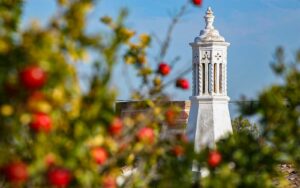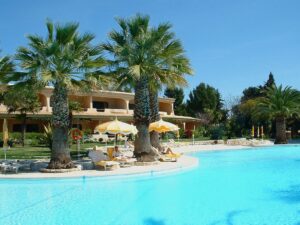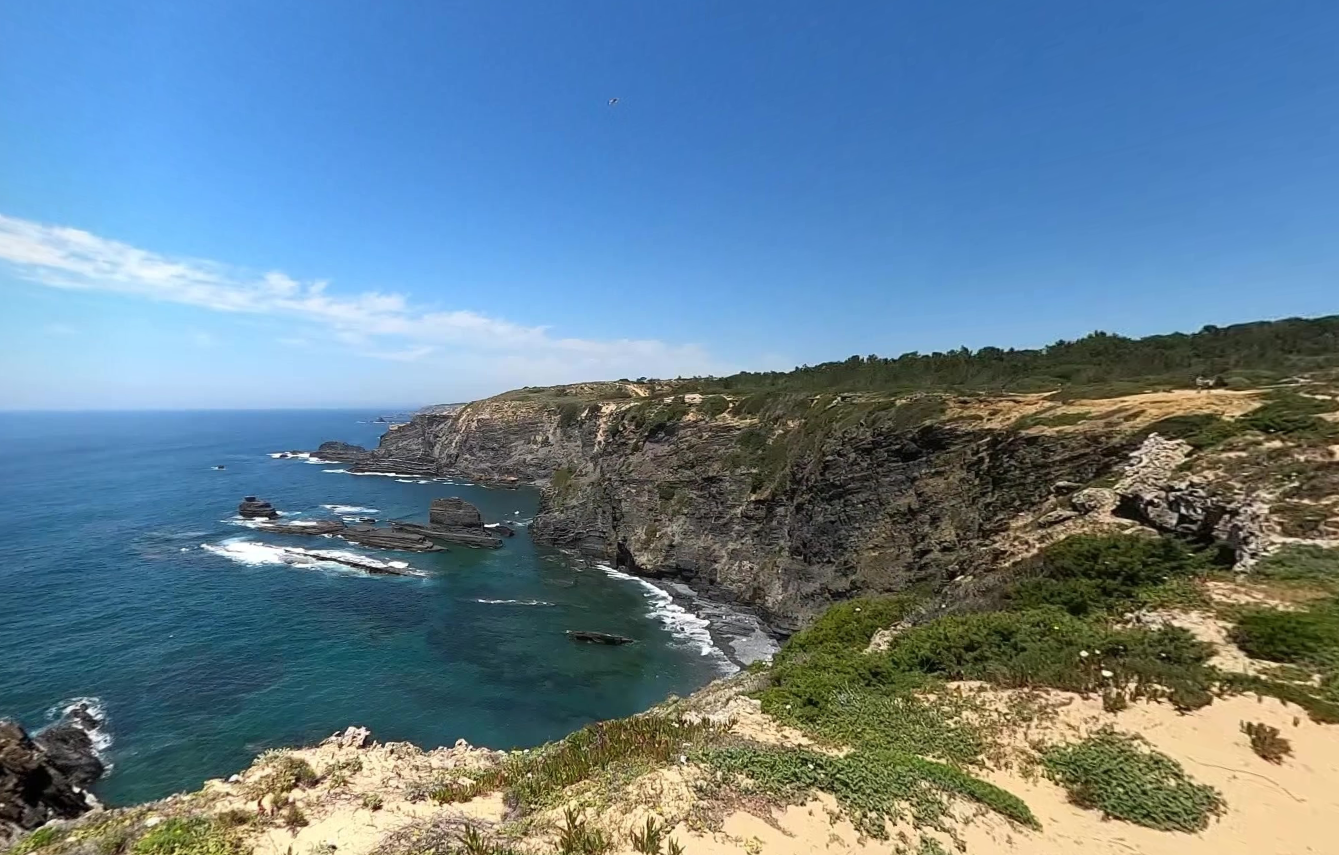
Costa Vicentina is a protected area with pristine beaches and nature reserves and a stunning landscape of jagged cliffs, rugged headlands, sea stacks, and wind-blown dunes. Starting on the Continent’s southwesternmost tip, in the western Algarve, it stretches for about 60km (37 miles) and becomes wilder the further north you go. There are no beachfront resorts there, only a few small villages (Aljezur, Vila do Bispo, and Carrapateira are the bigger ones). It’s mostly frequented by surfers, hippies, naturists, and those looking for a relaxed beach life. Coming here is experiencing what a European seaside holiday was like before mass tourism.
Most beaches are long and wide, surrounded by tall cliffs. The ocean has big waves here, so, naturally, the main activity is surfing, but the place is also perfect for long walks by the sea. Many beaches are nudist-friendly but have no facilities (no bars or restaurants, or even bathrooms). Some of them have no lifeguards either, so you have to be very careful in the water if you want to swim. It’s so wavy that many surfers actually prefer this coast than the world-famous meccas of surfers, Ericeira and Nazaré, in the center of the country. It’s more dramatic, quieter, and even more beautiful.
In the area of Costa Vicentina, the microclimate keeps the southern end permanently cool and often misty, even in July and August, when elsewhere in southern Portugal it’s hot and sunny. The northern end at Odeceixe, which is the northwesternmost village in the Algarve, is actually warmer and less windy.
To the north is the region of Alentejo, whose coast is similar to Costa Vicentina. Together, the two coasts form the tourist route known as Rota Vicentina. In total, the park covers over 100 km (62 miles), from Porto Covo in Alentejo to Burgau in Algarve. This is the only place in the world where storks build their nests on rocks by the sea and one of the last places in Europe where you can see otters in a marine habitat.
There are many beaches here, especially if you go off the beaten path, over cliffs, or down dirt roads.
Costa Vicentina beaches
• Praia da Amoreira
Widely considered the most beautiful beach in Costa Vicentina, this is where the Aljezur River meets the Atlantic. It’s a big beach, flanked by cliffs and backed by dunes, with plenty of space for everyone. A boardwalk at the top of the cliff on the southern side offers a panoramic view of the beach and the green valleys behind it. The calm and shallow waters of the river attract families with children, while the waves of the ocean bring the surfers.
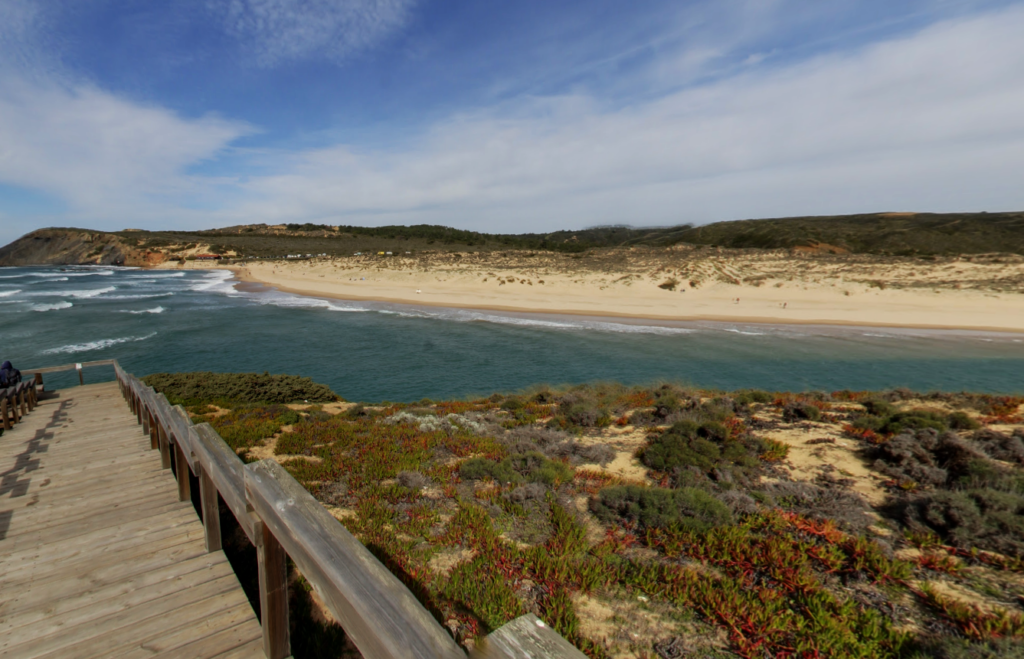
• Praia da Arrifana
Costa Vicentina’s main surfing beach is also one of Portugal’s top destinations for the sport-lovers. It’s visited throughout the year, and especially in autumn, for the best surfing waves. It’s a narrow but relatively long beach, surrounded by steep, dark cliffs from where the views are absolutely stunning.
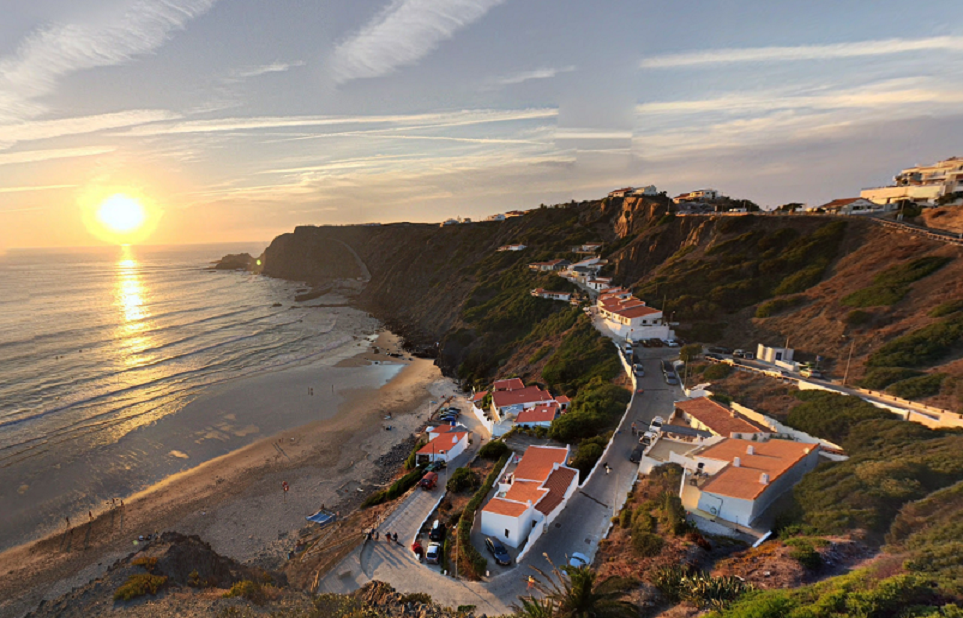
• Praia da Bordeira
The largest beach in Costa Vicentina. It is also known as Praia da Carrapateira. Once only frequented by fishermen and naturists, it’s now a favorite of Portuguese families and surfers. There are often seen more wetsuits than bathing suits. It’s very wide, with extensive dunes and beautiful natural scenery that invites long walks by the sea.
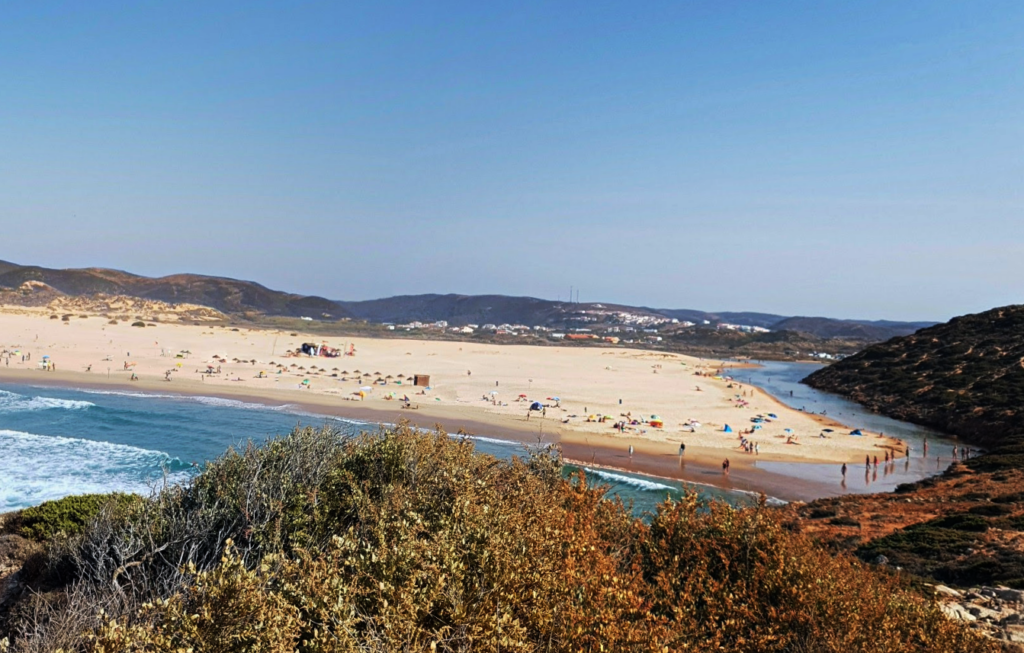
• Praia do Amado
Praia do Amado is where pro surfers go in the Algarve, often for national and international competitions. It’s just as popular as Praia da Arrifana for the sport-lovers. You won’t see many foreign tourists but Portuguese families. On summer weekends, this is usually the most crowded beach on Costa Vicentina. Behind it are green valleys and cliffs.
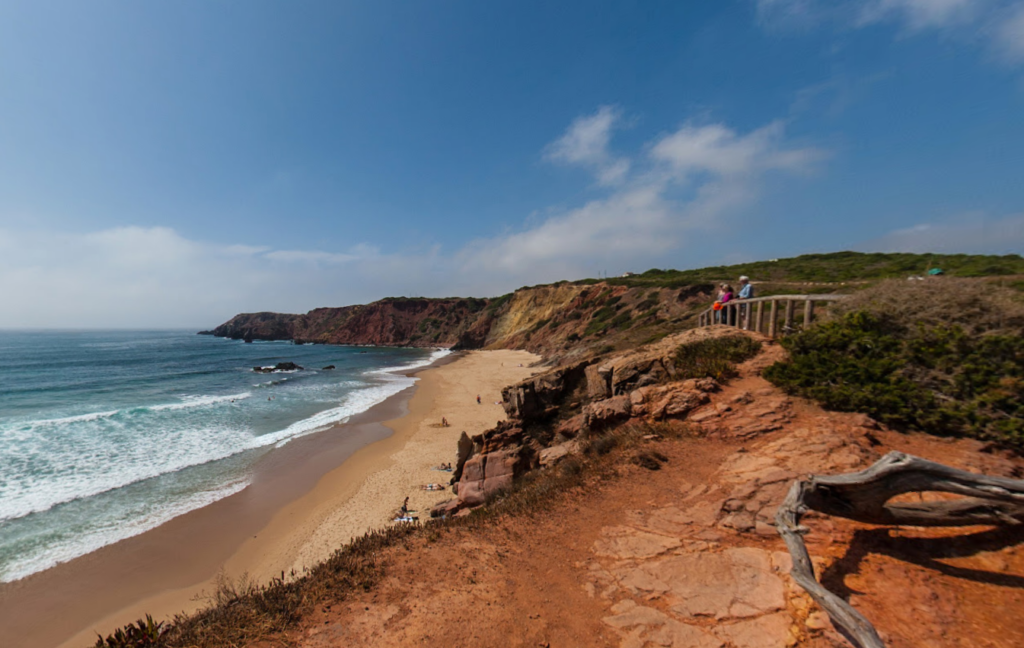
• Praia de Monte Clérigo
While the other beaches in the region have a remote and wild atmosphere, this one is livelier and usually more crowded in the summer. It’s popular with local families and surfers, and because the access doesn’t involve going down cliffs, it’s accessible also to those with mobility issues.
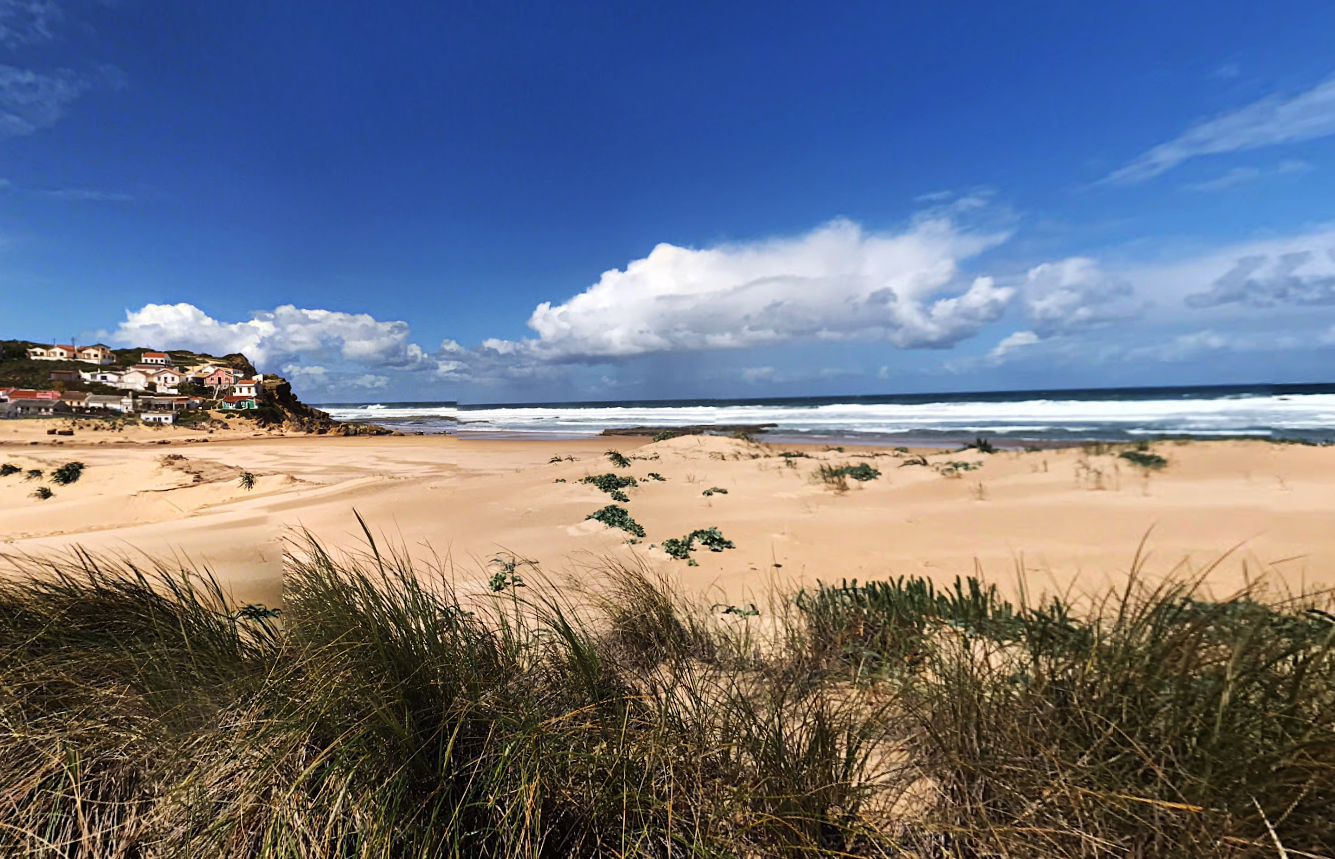
• Praia de Vale Figueiras
It’s quite a large beach and it almost triples in size at low tide, when you have access to a longer stretch of sand to the north. This northern section has rocks, which offer privacy to naturists. The main beach, however, has become a favorite of Portuguese families and is especially frequented for the surfing conditions. The beautiful landscape of tall cliffs and small rock formations invites long walks by the sea.

• Praia do Castelejo
This is now a very popular surfing beach. It’s also known for its natural beauty, thanks to a rock formation that resembles a castle, and also to the tallest cliffs on the Algarve coast. There’s a grand view from the top. There’s a surf school there so you can rent equipment and there’s also a restaurant with sea views.

• Praia da Cordoama
Located to the north of Castelejo, this beach also attracts a number of surfers. In the summer a surf school offers lessons and rentals. If you’re not a surfer, the reason to visit this beach is for the view of the coast from the viewpoint on the clifftop, and also for long walks by the sea, enjoying the wild landscape. The tall cliffs also make this a good paragliding site, and the northern end is for naturists.

• Praia da Barriga
At low tide, you can walk from Praia do Castelejo or Praia da Cordoama to this beach on the north. It’s often deserted, except when surf schools bring their clients. Naturism is also common here. When not accessible from the other beaches, you need to drive down an unpaved road.
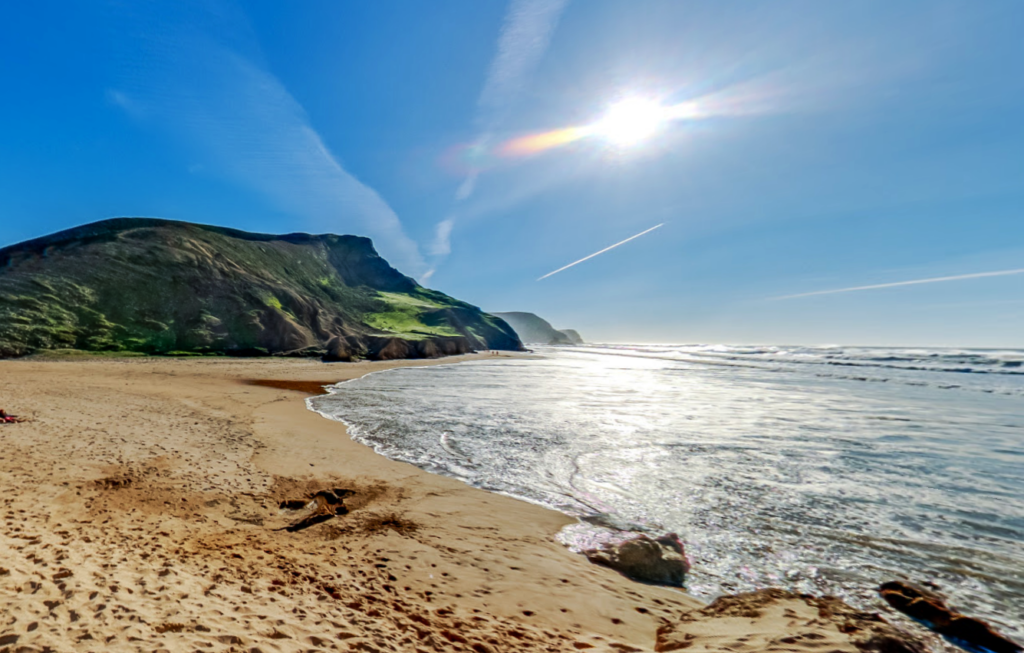
• Praia da Murração
The most remote of Costa Vicentina’s beaches can only be reached by driving down a dirt road for several kilometers. For this reason, very few people come here. You’ll mostly see naturists, campers, and a few families who take advantage of the free space for the kids and dogs to run around. The sea is wavy for surfing, but here the currents are strong, so you’re advised to just get your feet wet on the shore. It’s a beach to sunbathe in peace and quiet, surrounded by a magnificently wild landscape.
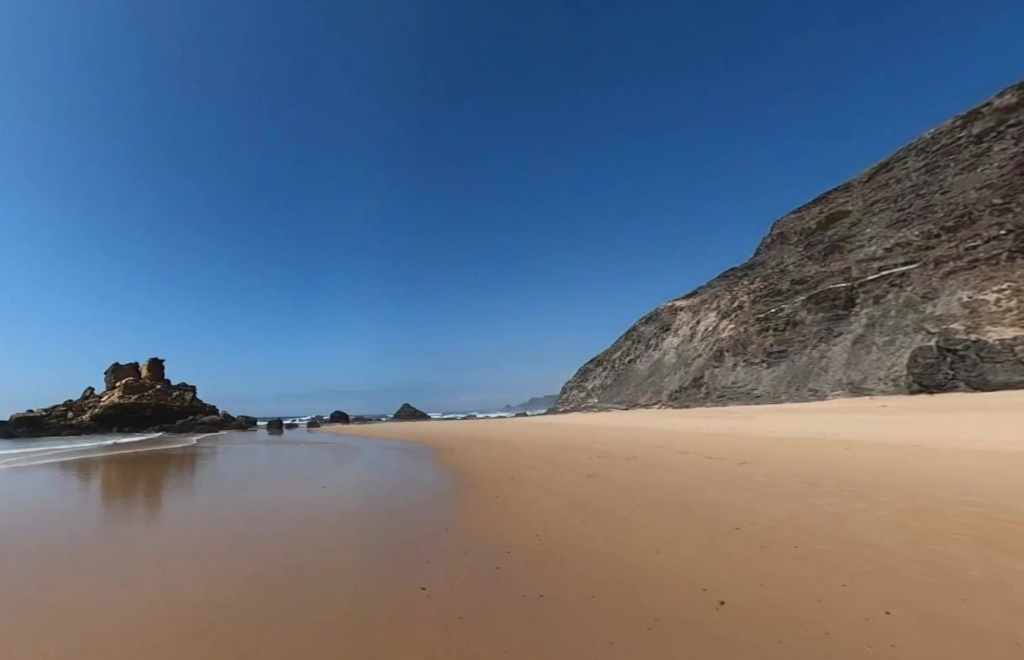
• Praia do Vale dos Homens
This beach is in a very remote location with nothing but farmland and pine trees in the surroundings, so it’s one of the least visited beaches on this coast. It practically disappears when the tides rise in autumn and winter, but on a low-tide summer day, it can be wonderful. There are rocks along the shore that often form tidal pools, trapping sea creatures like starfish and crabs, while the big rock formations on the northern end provide privacy for naturists.

• Praia de Odeceixe
It is said that this is officially one of Portugal’s best beaches. A national survey conducted in 2012 gave Praia de Odeceixe the title of the most wonderful beach in the “cliff beaches” category. This has made it the most famous in Costa Vicentina and brought the crowds. It’s now a favorite of families and surfers from where there are beautiful views from the top of the cliffs.
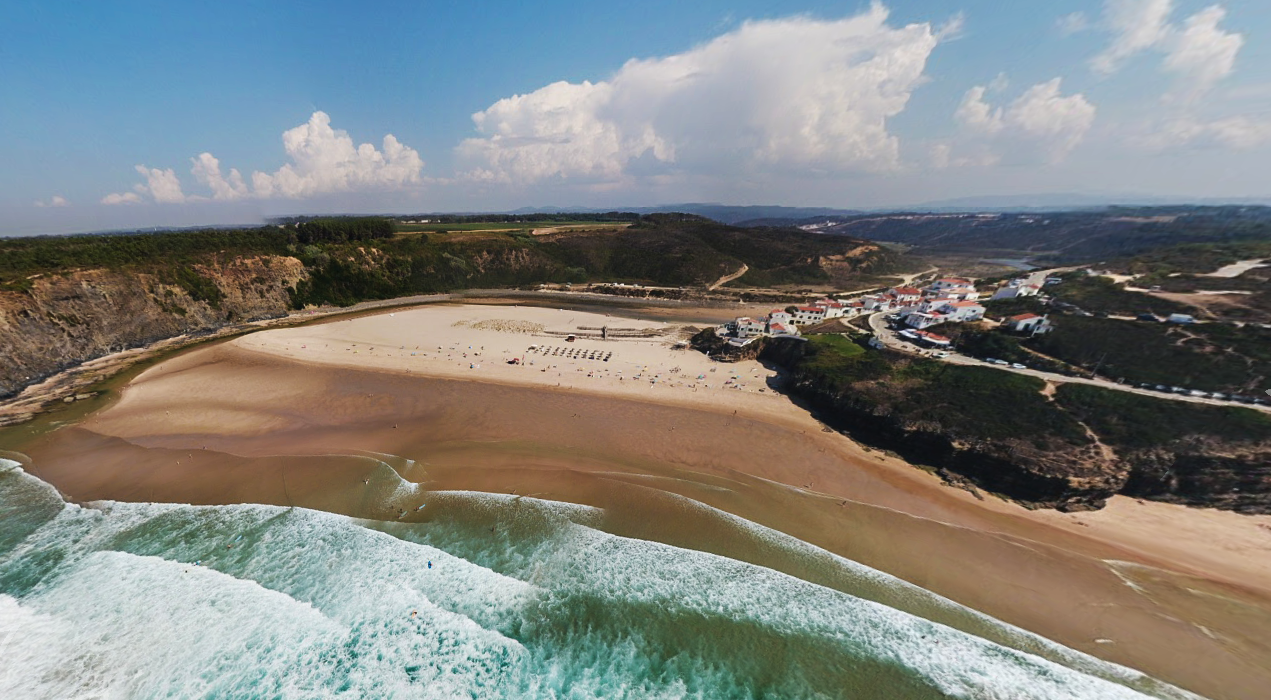
• Praia das Adegas
This is the only beach that’s officially a naturist. Neighboring the popular Praia de Odeceixe, it is reached via a wooden staircase that goes down a steep cliff. Although the often-rough sea isn’t great for swimming, it’s the perfect place to avoid tan lines, letting go of inhibitions, and sunbathing nude.

How to get to Costa Vicentina
Costa Vicentina is so remote, that there’s practically no public transportation. There’s just a very infrequent bus (Vamus bus n°79) between Lagos and Odeceixe (stopping in Aljezur on the way), but none to the beaches.
By car, from the major Algarve towns (Faro, Albufeira, Portimão, and Lagos), drive east towards Sagres, then north, through road N268, which cuts through the villages of Vila do Bispo and Carrapateira. Continuing north, the road becomes the N120, which goes to the towns of Aljezur and Odeceixe. You’ll find signs to most of the beaches in these towns.
From Lisbon, you can take an express bus to Odeceixe, Aljezur, and Sagres. To explore the beaches of these towns, however, you’ll need a car.
